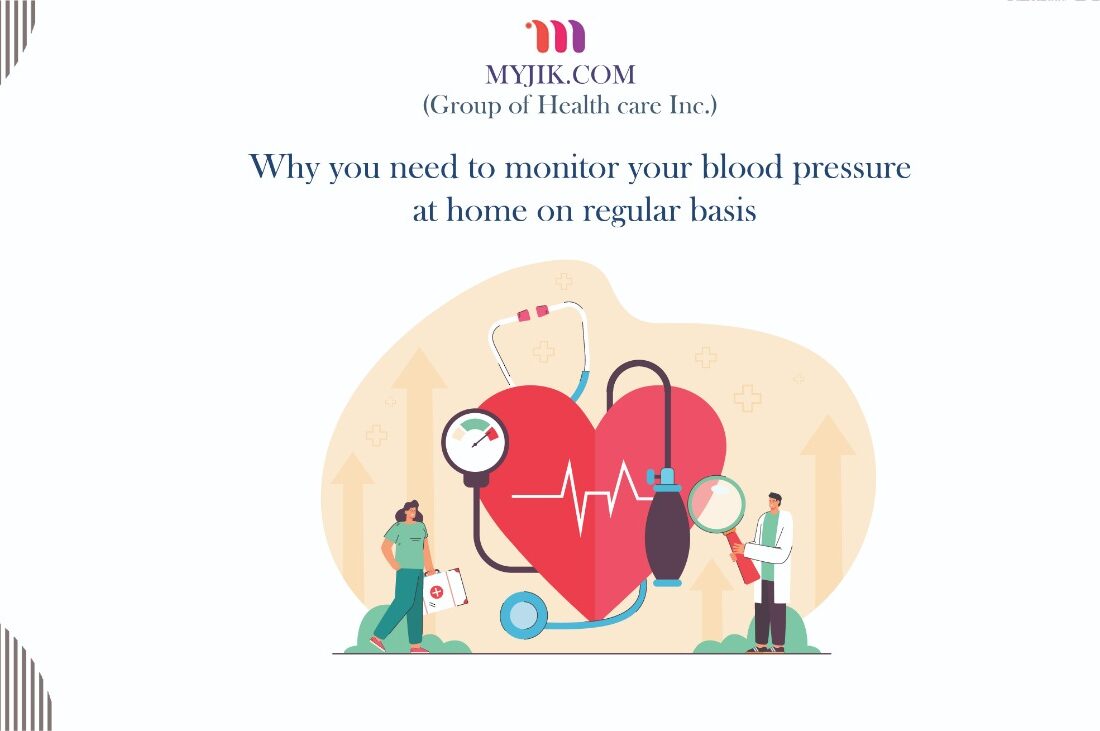
According to a study by WHO, Hypertension affects an estimated 1.28 billion adults aged 30 to 79 worldwide, with the majority (two-thirds) living in low- and middle-income countries. If left untreated, high blood pressure causes your arteries to gradually narrow and become damaged, eventually causing your heart to work so hard that it fails! People who are at risk of developing high blood pressure or who already have it should monitor it at home because their blood pressure changes frequently depending on what they’re doing.
Consequences Of Having High Blood Pressure
High blood pressure damages your arteries by making them less elastic, reducing oxygen and blood flow to your heart and causing heart disease. Furthermore, decreased blood supply to the heart might result in:
- Angina (type of chest pain)
- A heart attack might occur when the blood supply to the heart is cut off and the heart muscle begins to die due to a lack of oxygen. The longer the blood flow is restricted, the more damage the heart suffers.
- Heart failure (disorder in which your heart is unable to pump blood and oxygen to your other organs adequately )
Blood pressure monitors come in a variety of forms:
1. Manual Blood Pressure Machine
Medical professionals typically use a stethoscope to interpret the readings because it is necessary. This gadget, also known as a manual sphygmomanometer, is one of the most commonly used blood pressure monitoring devices in a medical setting. A cuff is wrapped around the patient’s arm, a gauge (reading scale) & an inflation bulb are all included.
There are two types of manual sphygmomanometers:
- Mercury sphygmomanometer: Mercury sphygmomanometer is the gold standard for monitoring blood pressure in clinical settings. The reading scale in this instrument is made out of mercury.
- Aneroid sphygmomanometer: This gadget uses a round gauge to measure blood pressure instead of mercury on the reading board.
2. Digital Blood Pressure Machine
These gadgets, also known as digital sphygmomanometers, can be used at home without any assistance. Self-measured blood pressure (SMBP) monitoring utilises a blood pressure instrument at home instead of a hospital. These devices including are safe and simple to use. Ambulatory monitoring involves taking blood pressure readings at predetermined intervals and wearing a cuff for 24 hours.
Once a year, you must verify the accuracy of home blood pressure monitors by taking them to a healthcare centre and comparing the readings on the devices. Unless a person has a heart rhythm disorder such as atrial fibrillation or arrhythmia, you can accurately measure at home with digital monitors.
Why Monitoring Your Blood Pressure At Home Is Beneficial?
- Improves Your Control
Self-monitoring can help you feel more in control of your health. It also reduces the amount of money you spend on health care. Self-monitoring may help you see your doctor or clinic less frequently.
- Guides In Tracking Your Treatment
The only way to know if your lifestyle modifications or medications are effective is to have your blood pressure checked regularly. Monitoring blood pressure fluctuations at home can help you, and your doctor makes treatment decisions, such as lowering dosages or switching medications.
- Helps To Examine Your Blood Pressure Outside Of The Doctor’s Office To See If It Differs
Some people have blood pressure increases due to the anxiety involved with going to the doctor (white coat hypertension). Others have normal blood pressure at a clinic but high blood pressure elsewhere (masked hypertension). Monitoring your blood pressure at home can assist you in determining whether you have high blood pressure.
Knowing Blood Pressure Levels
Normal blood pressure is determined as 120/80 mm Hg or less, where 120 mm Hg is the systolic BP and 80 mm Hg is the diastolic BP.
The different forms of blood pressure are as follows:
- Low Blood Pressure
Low blood pressure, often known as hypotension, is when the blood pressure falls below 90/60 mm Hg. It is a serious condition that necessitates immediate medical attention.
- High Blood Pressure
When the systolic BP varies from 120 to 129 mm Hg and the diastolic pressure is at or below 80 mm Hg, it is called high blood pressure.
- Stage 1 Hypertension: Stage 1 hypertensionis defined by a 130 to 139 mm Hg systolic blood pressure and a diastolic blood pressure of 80 to 89 mm Hg.
- Stage 2 Hypertension: Stage 2 hypertensionoccurs when the systolic pressure is 140 mm Hg or higher, and the diastolic pressure is 90 mm Hg or higher.
- Hypertensive Crisis: Hypertensive crisis occurs when the systolic blood pressure surpasses 180 mm Hg and the diastolic blood pressure exceeds 120 mm Hg.
Keep these do’s & don’t in mind when measuring blood pressure at home:
- Make sure not to eat or drink anything 30 minutes before checking your blood pressure.
- Ensure your bladder is empty before you begin your measurement process.
- Sit in a comfortable chair with your back supported for at least 5 minutes.
- Keep your legs uncrossed and both feet flat on the ground.
- Rest your arm on a table at chest height with the cuff on.
- Ensure the cuff on your blood pressure monitor is snug but not too tight. You should wear the cuff on your skin rather than over your clothing.
- Avoid speaking while your pressure is being checked.
Conclusion:
Blood pressure, both high & low, can be exceedingly harmful and have major health effects. Therefore, blood pressure monitors, such as digital sphygmomanometers, can be beneficial for testing blood pressure regularly at home without the assistance of a doctor.













